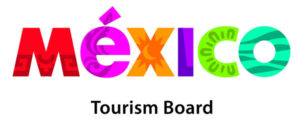By Tracey Manailescu, Co-founder of The Wedding Planners Institute of Canada Inc.
Kindle Media
As a professional wedding planner, one of the most critical business decisions you will make is determining how to charge for your services. Your pricing structure not only impacts your profitability but also influences the type of clients you attract and how your value is perceived. Let’s explore the most common pricing models along with the pros and cons of each.
1. Flat Fee Pricing
A flat fee pricing model means you charge a fixed rate for your planning services, regardless of the wedding budget or complexity.
Pros:
- Provides clarity for both you and the client.
- Ensures predictable income for your business.
- Avoids conflicts over expenses or commissions.
- Clients appreciate knowing exactly what they will pay.
Cons:
- Requires careful estimation to ensure you are adequately compensated for your time and effort.
- May not be as flexible for larger or more complex weddings.
- If underestimated, you could end up working for less than you should be earning.
2. Percentage-Based Pricing
In this model, your fee is a percentage (typically 10-20%) of the total wedding budget.
Pros:
- Aligns your compensation with the scale and complexity of the wedding.
- Offers higher earning potential for luxury and high-budget weddings.
- Clients may perceive this as fair, as they pay in proportion to their wedding investment.
Cons:
- Some clients may feel this structure incentivizes planners to push higher-cost vendors.
- Requires transparency and trust to avoid misunderstandings about what is included.
- If the wedding budget fluctuates, it may lead to pricing disputes.
3. Hourly Rate Pricing
Charging an hourly rate is straightforward. You bill clients based on the actual time spent planning their wedding.
Pros:
- Ideal for partial planning or consultation services.
- Fair to both planner and client, as compensation directly reflects effort.
- Great for micro-weddings, elopements, or DIY couples needing guidance.
Cons:
- Can be difficult to predict final costs, which may deter clients.
- Requires diligent tracking of time, which can be tedious.
- Clients may hesitate to ask for help, fearing escalating costs.
4. Hybrid Pricing Model
A hybrid approach combines elements of two or more pricing structures. For example, you might charge a flat fee for standard services but include a percentage-based fee for additional planning beyond the scope.
Pros:
- Offers flexibility to customize pricing based on the client’s needs.
- Ensures fair compensation for both standard and extra services.
- Helps prevent financial loss if the wedding complexity increases unexpectedly.
Cons:
- Requires clear communication with clients to avoid confusion.
- More complex to manage compared to a single pricing model.
Choosing the Right Pricing Model for Your Business
Your ideal pricing structure will depend on your business goals, target clientele, and market positioning. Consider factors such as the complexity of the weddings you plan, your level of experience, and the expectations of your ideal clients. Regardless of the model you choose, transparency and clear contracts are key to building trust and avoiding conflicts.
By carefully selecting and structuring your pricing model, you ensure that you are fairly compensated while providing exceptional service to your clients. What works best for one planner may not work for another, so take the time to evaluate what aligns best with your business and personal work style.

Tracey Manailescu is an internationally recognized wedding industry expert, educator, and co-founder of The Wedding Planners Institute of Canada (WPIC). With over two decades of experience, Tracey has dedicated her career to elevating the standards of professionalism in the wedding and event planning industry.








Leave a Reply